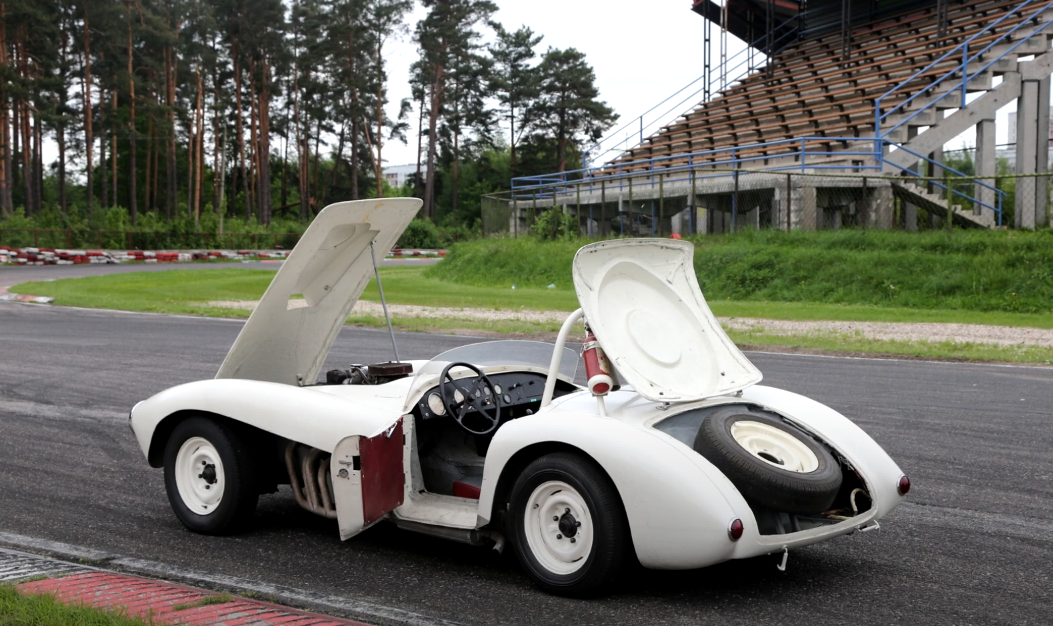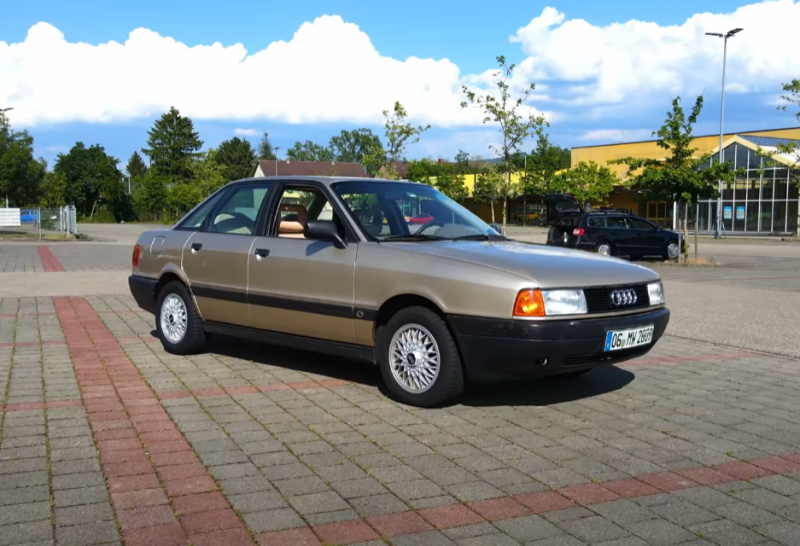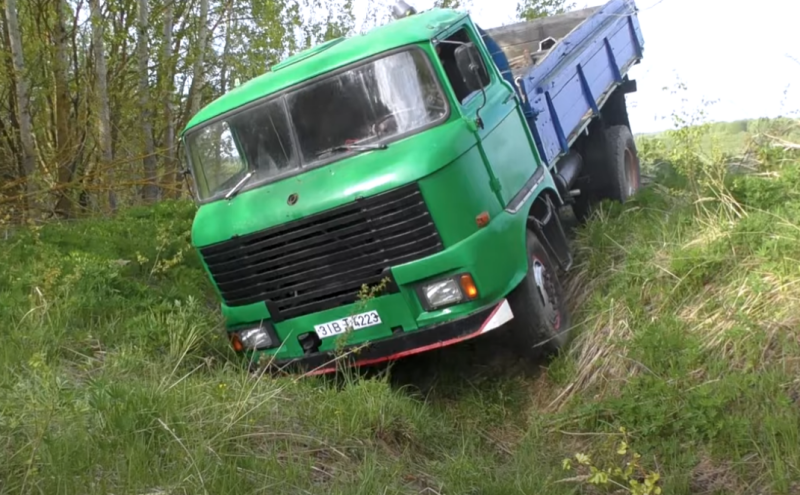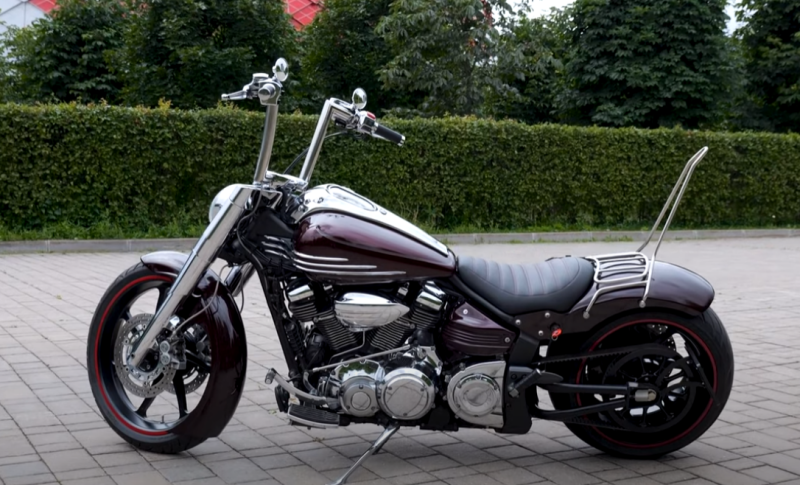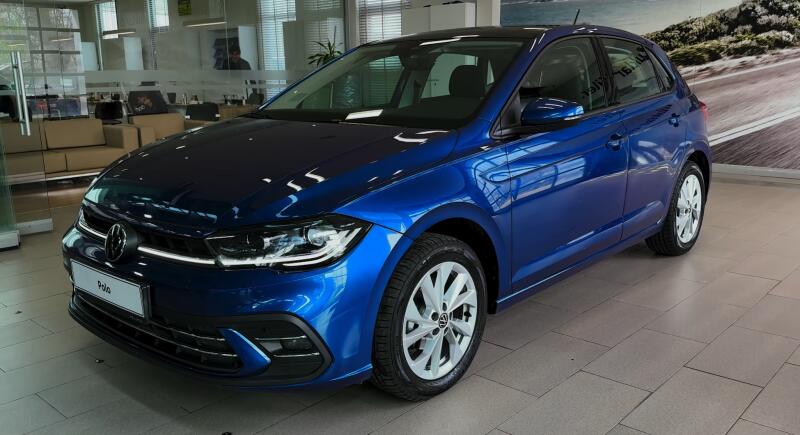But there were cars that stood out from the masses, they were assembled at the ZIL plant, moreover, on the chassis of government limousines. Accordingly, these cars turned out to be the most powerful from the very beginning. They performed in the same class as the best foreign supercars, although they did not compete with each other - there was no way.
Pre-war development
Back in the second half of the 1930s, designers working at the ZIS plant (then it was called that) decided to create a full-fledged sports car. It was supposed to be exactly no worse than foreign counterparts.
 The car was beautiful and powerful. Photo: Youtube.com
The car was beautiful and powerful. Photo: Youtube.comFor the pre-war USSR, this was normal - in those years, Comrade Stalin himself oversaw the auto and motorcycle industry, American models were purchased, and their own were developed on their basis. The chassis was already - from the ZIS-101, and the appearance was invented from scratch, focusing on the latest sports cars of those years.
The prototype was made by 1940 - it was named ZIS-101A Sport. The car was frame, and the engine from the government limousine was specially modified. An in-line eight-cylinder power unit with a displacement of 5,75 liters was boosted to 141 hp. With. Recall that in the production model, he developed 110 hp. With.
ZIS-101A Sport turned out to be streamlined, it accelerated to 150 km / h. By the way, the designers claimed that the motor is capable of more. In September 1940, this was proven. During one of the test runs, the car accelerated to 162,5 km / h.
 ZIS-101 Sport is more like a limousine. Photo: Youtube.com
ZIS-101 Sport is more like a limousine. Photo: Youtube.comInterestingly, the ZIS management agreed to the sports car project not for the sake of any achievements. Here the goal was pursued - to subject the chassis, engine, gearbox and other components of the model to strength under conditions of maximum loads. It is unreasonably expensive to use serial limousines for this, but you can test it on the sports ZIS-101A Sport.
Unfortunately, the pre-war car was not destined to become the star of the track - the outbreak of war prevented it.
Project revival
It was only in the 1950s that they returned to further development of a powerful sports car. The designers were too busy with the trucks needed to restore the national economy.
A more modern limousine, the ZIS-110, was taken as a chassis. The new car was again supposed to be used rather than for racing, but as a test platform.
The ZIS-112S was not suitable for competitions for a number of reasons:
✅ Long base
✅ Heavy frame chassis
✅ Overloaded front axle
But still, the sports car was being prepared for racing, although it is not entirely clear with whom exactly he was to compete. The engine was thoroughly redesigned - instead of 140, it produced 182 hp. With. The maximum speed exceeded 200 km / h - for the first half of the 50s it was something.
 Another sports ZIS. Photo: Youtube.com
Another sports ZIS. Photo: Youtube.comCloser to the middle of the 1950s, they decided to repurpose the ZIS-112S for sports. First, the frame was shortened to the car, then it was lightened by 600 kg. The engine was boosted to 195 hp. With.
Until 1957, a number of prototypes were assembled, the latter already being called ZIL-112. But in fact, these were still old ZIS, created on the chassis of the 110 model.
New developments
In 1957, it was decided to update the racing car globally. This had to be done in any case, because the ZIS / ZIL-110 were going to be changed to a new model with an index of 111. Recall that the main purpose of the sports car was to refine the units of serial limousines. But the ZIL-112S was supposed to become a racing one at the same time.
 Two ZIL-112S. Photo: Youtube.com
Two ZIL-112S. Photo: Youtube.comAccording to the terms of reference, the car had to be prepared by the end of 1958. But since Stalin was no longer alive, the designers of Soviet factories relaxed and stopped meeting deadlines.
The frame was welded only in 1960. Around the same time, the body for the first prototype was assembled. Perhaps it was made with an eye on Ferrari cars of those years, but not a fact - nowhere is this directly mentioned. In 1961, the new model was already participating in its first races.
Design features
In the manufacture of a new Soviet sports car, standard components and parts from serial models were used - the ZIL-111 limousine and the GAZ-21 passenger car. Some sources contain information that the nodes were taken from Pobeda, but by that time it had been removed from the assembly line for several years.
In order for the car to fully participate in the races, the frame was made completely from scratch. It was welded from thin pipes, but the alloy was chosen for increased strength.
 Salon, of course, Spartan. Photo: Youtube.com
Salon, of course, Spartan. Photo: Youtube.comThe body was decided to be made without the use of metal. All panels were fiberglass, and they were connected to each other by glue.
As a result, the sports car was made as light as possible - depending on the installed engine, the weight of the model ranged from 1,1 to 1,33 tons. By the way, the engines were installed both by ZIL-111 and GAZ-13. The latter was lighter by more than 200 kg.
The car received a simple front suspension from the serial Volga GAZ-21. Naturally, it had to be finalized and customized to fit the features of the ZIL-112S. The rear suspension is a De Dion carrier beam with a gearbox separately attached to the frame.
The brakes, in the spirit of the time, were drums both front and rear. For reliability, the hydraulic drive was made separate for each of the axles.
The main engine for the sports car was the ZIL-111. Its power was increased by installing two K-85 carburetors, increasing the compression ratio and refining the gas distribution system.
Since the gearbox was automatic on the ZIL-111 government limousine, it was abandoned by installing mechanics from the ZIS-110.
Sports career
The first official race in which a Soviet sports car took part took place in 1961. True, there were no rivals for the ZIL-112S, so it was decided to use the car also to set Soviet speed records.
 Engine with index ZIL-111. Photo: Youtube.com
Engine with index ZIL-111. Photo: Youtube.comIn 1962, the first race took place on Lake Baskunchak. The goal is to set a speed record. The car was planned to accelerate to 350 km / h. For these purposes, the specialists of the Likhachev Plant made a new, maximally streamlined body, lightened the car and finalized the engine.
Unfortunately, the ZIL-112S failed to break any speed records. The weather turned bad and it began to rain. The dry bottom of the lake turned into a shallow and dirty puddle. Then it was not possible to accelerate more than 230 km / h.
By the way, the body, specially prepared for high-speed races, was removed from the chassis and written off.
In 1962, they planned to use the ZIL-112S for racing at the Dmitrovsky training ground - this time the car was supposed to set a speed record in a 24-hour race. Again it did not work out - because of the leadership of the Likhachev Plant. They believed that all these records were unnecessary, only distracting engineers and employees of the enterprise from work.
Enthusiasts still managed to defend the model, they say, such cars are needed for Soviet sports. In 1963, a second copy of the ZIL-112S was built, more adapted for racing, with disc brakes on all wheels and safety arcs.
Up until 1970, the two sports cars were raced in different classes. They were constantly refined, new, more advanced and / or light engines were installed. Both ZIL-112S received the most powerful power units in 1967. These are 300 hp motors. With.
In 1970, both sports cars were out of work - they had no one to compete with, Soviet racing models were light, with small engines. They stood at the ZIL plant until about the mid-70s, and then they were bought by the club of antique cars from Riga, where one of the copies is still exhibited.
 Classic supercar. Photo: Youtube.com
Classic supercar. Photo: Youtube.comThe fate of the second ZIL-112S was interesting. According to rumors, it was smashed back in the 1970s and the car was taken to some local collective farm for restoration - there was a small museum of tractors. The car stood there for several years, then it was transferred to Riga - this was in the 80s.
In 1993, the never made ZIL-112S was given to the Swede in exchange for the ZIS-101. The collector's hands did not reach the restoration either. In 2018, Evgeny Shimansky bought the car and brought it back to Russia. There he is now, gradually restored.
Although there is still a lot of work on the ZIL-112S, they are moving forward, so we can hope for a complete restoration of this wonderful car.
